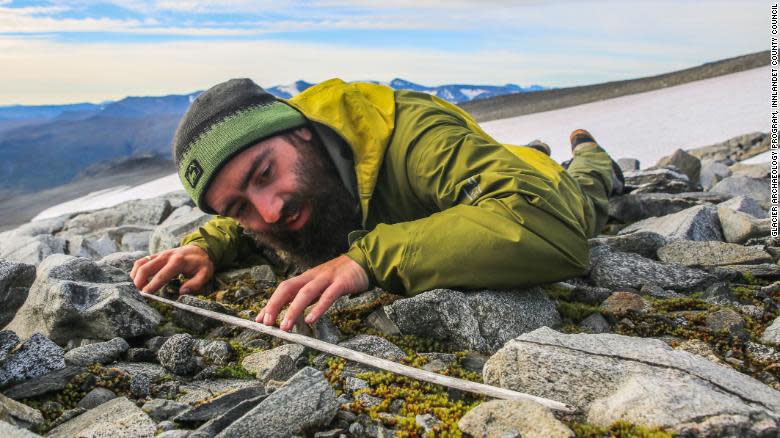Climate crisis: Melting mountain ice reveals ancient artefacts in Norway

An archaeologist surveys a glacier in Norway
(Glacier Archaeology Programme, Innlandet County Council)An archaeological survey of an ice patch in Norway’s Jotunheimen mountains has led to a haul of ancient artefacts.
The survey, which was conducted on the Langfonne ice patch in 2014 and 2016, discovered Iron Age scaring sticks used in reindeer hunting, reindeer antlers, a 3,300-year-old shoe from the Bronze Age, and 68 arrows.
The report’s authors have hailed the discovery of the arrows as the earliest ice finds in northern Europe.
Global warming has caused the ice patch to retreat by more than 70 per cent over the past two decades, the study found.
“With the ice now retreating due to climate change, the evidence for ancient hunting at Langfonne is reappearing from what is in essence a frozen archive,” said Lars Pilo, the study’s lead author and an archaeologist from the Innlandet County Council.

“The ice melt, sad as it is, provides an unprecedented archaeological opportunity for new knowledge.”
The finds come in a range of conditions, with the oldest arrows, from 4000BC, in poor condition. However, the arrows from the Late Neolithic period (2400-1750BC) have been better preserved in comparison to those from the following 2,000 years, according to the study.
Using ground-penetrating radar (GPR) technology, researchers concluded that the ice movement might be the reason behind the deterioration of the oldest arrows.
GPR data revealed ice deformation deep inside of the patch may have broken the old, brittle arrows, but it also helped to bring them to the surface to be discovered.
“Ice patches are not your regular archaeological sites,” Mr Pilo said. “Glacial archaeology has the potential to transform our understanding of human activity in the high mountains and beyond.”
Read More
Woman returns ‘cursed’ Pompeii artefacts after 15 years of bad luck
US tourist caught stealing artefact from Auschwitz
Insurers ‘in denial’ over climate change impact, study claims

 Yahoo Finance
Yahoo Finance 